Award-winning architecture firm
utilizes BIM for building an eco-friendly egg farm
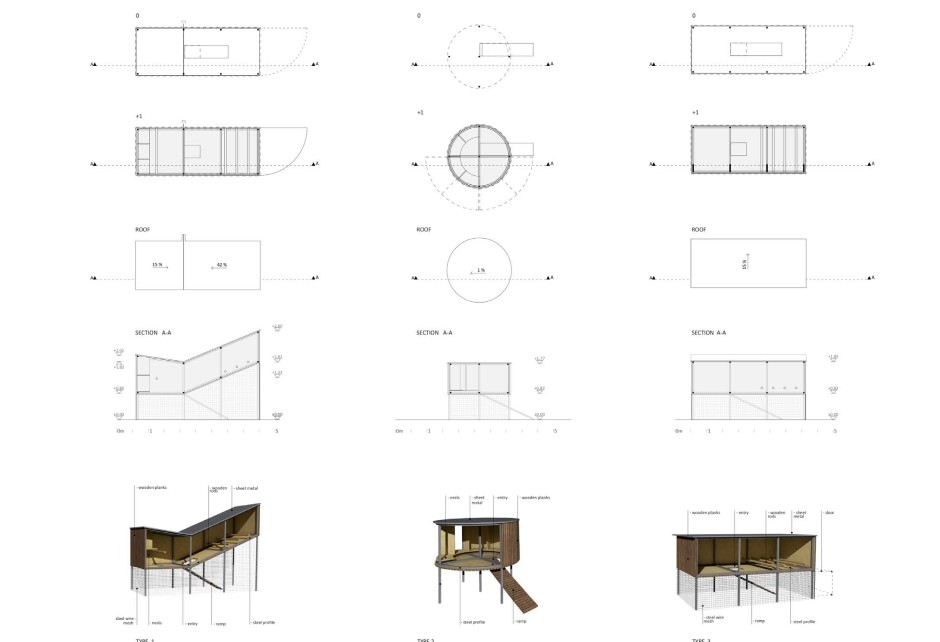
One of the principals in the office has been highly engaged with Archicad since version 4.55, and introduced the firm to a wide range of its benefits. In recent years, transition to BIM in general became necessary, in which Archicad was an obvious choice for our office to evolve,
explains Marin Jelčić, one of the founding partners of the company.
As a result, we receive much clearer feedback from our clients throughout all the stages of design,
Marin Jelčić, Founding partner, SKROZ
Following in-house training, SKROZ upgraded and re-organized the office and their design processes. They now profit from BIM implementation by means of deliverables, data checking, precision and better presentation materials with regards to quality and quantity.
Now, they have 10 seats of Archicad, and they employ one Graphisoft Certified BIM Manager.
CHICKENVILLE Project
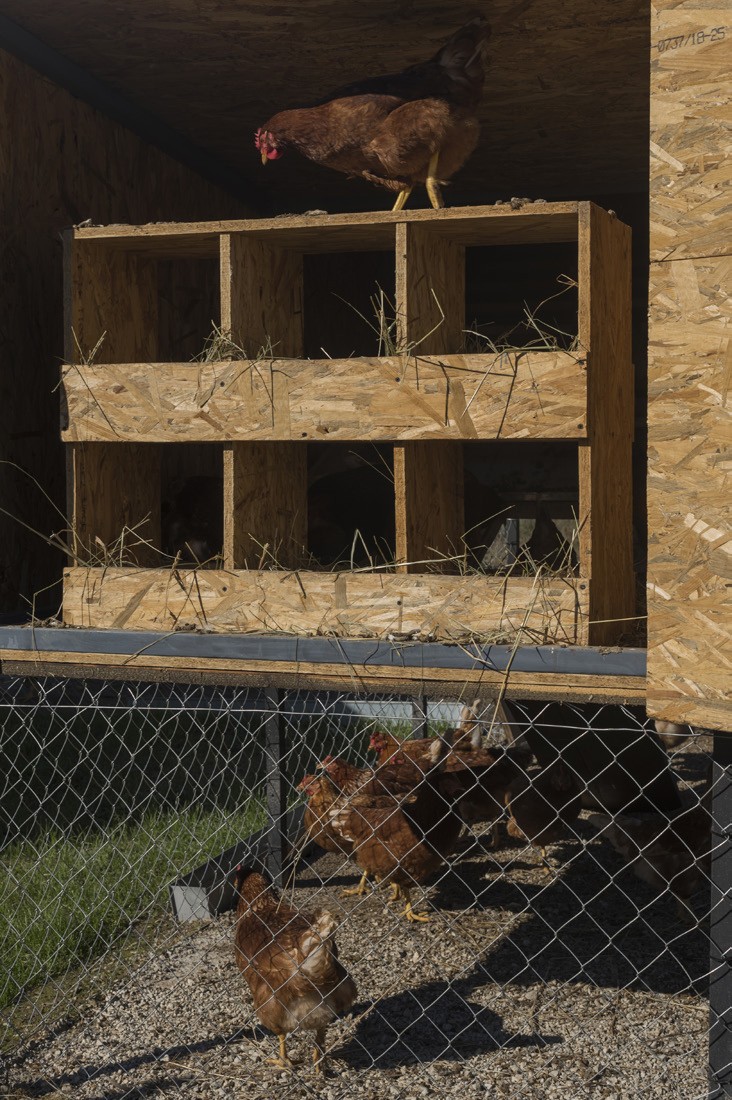
CHICKENVILLE was a project for one of their long-term clients for whom they have done several projects in the village of Rakov potok near Samobor, Croatia. One of those projects was a small kindergarten. Talking to the children, the client realized that although they live in a rural area, most of them do not know where eggs come from. Therefore, the client decided to build an organic egg farm where children could come and see all the processes from the egg nesting to the hens laying fresh eggs. It had to be a contemporary farm, easy-to-build with friends and family using locally-sourced raw materials, and comply with the highest standards of eco-farming. It is one of the tourist attractions in the area, with children coming from many kindergartens guided by professionals from the faculty of agriculture.
The idea was to create a multi-functional space/project that would serve both as a regular egg farm and a place to bring in visitors. That’s where the initial thinking started: this was to be a small “village,” a settlement with all the basic functions such as housing, services, plazas, streets and public buildings. To create visitors access, a “public” street was formed in the middle. This is a shared central area visually connecting the chicken coops, but not interrupting the basic egg farming function. Chickenville’s central zone, enabling the visitors’ and farmers’ access (feeding, maintenance, cleaning), is then surrounded by the chicken coops.
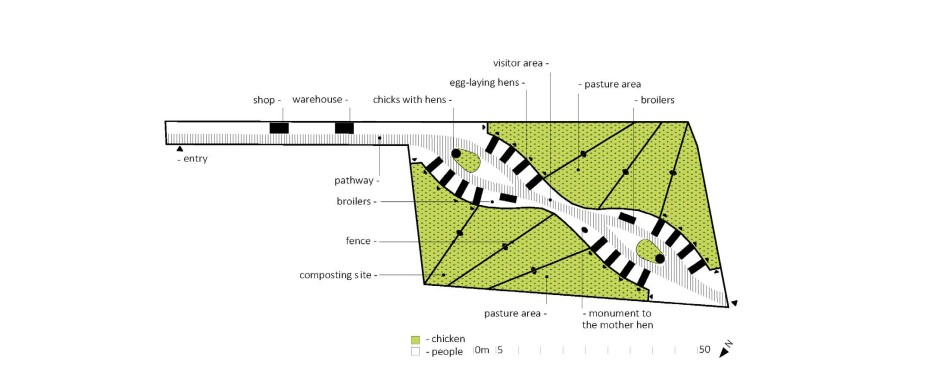
The project’s very first challenge was to bring together the functional demands of an eco-friendly farm and those of a family farm. All the built units follow their respective functions, as well as the very strict parameters and regulations of eco-friendly farming, providing chickens with proper housing and making the farmers’ work and maintenance easier. The materials used are typical for the area’s farm buildings (unfinished fir, chicken wire). Because of the limited budget, all the work was done by amateur metal workers, the investor’s neighbors, and relatives.
The challenge was to create a contemporary design – using traditional materials – yet still adhere to the look and charm of a rural chicken coops. Since this is a tourist project as well, additional work had to be done to guide the visitors. As a result, Chickenville’s visual identity was developed, and now it has its own coat of arms, flag, plazas and even street numbers.
The project timeframe was only 4 months from start to finish. As the project budget was limited, decision-making had to be quick. The architects used Archicad to estimate and optimize construction costs of a single repeating unit, bearing in mind that any cost reduction on a unit is multiplied by 20 in the overall project cost.
“There was not any special modeling challenge worth mentioning, since the model is rather simple, but we did model everything to the smallest detail, so there were no surprises or misunderstandings at the construction site,” said Mr Jelčić.
“There was not any special modeling challenge worth mentioning, since the model is rather simple, but we did model everything to the smallest detail, so there were no surprises or misunderstandings at the construction site,” Marin Jelčić, Founding partner, SKROZ.
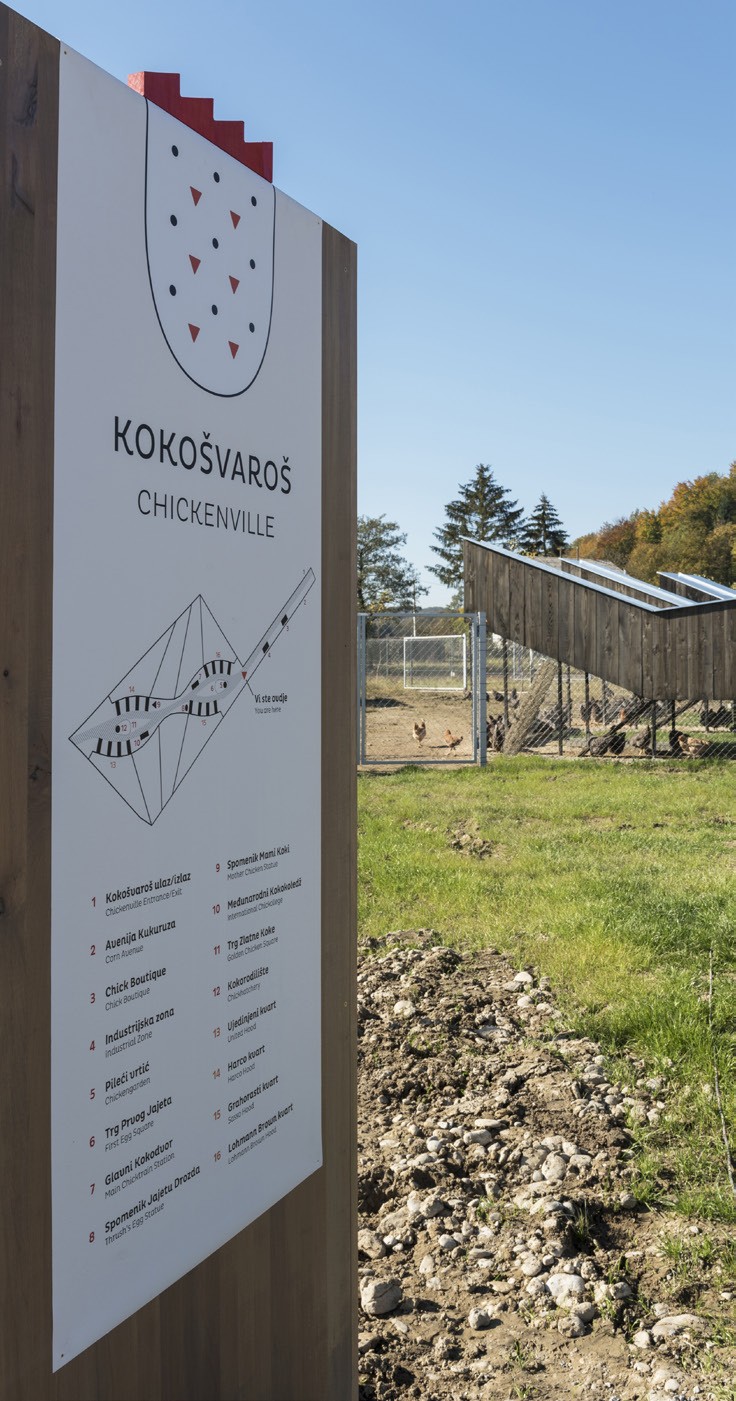
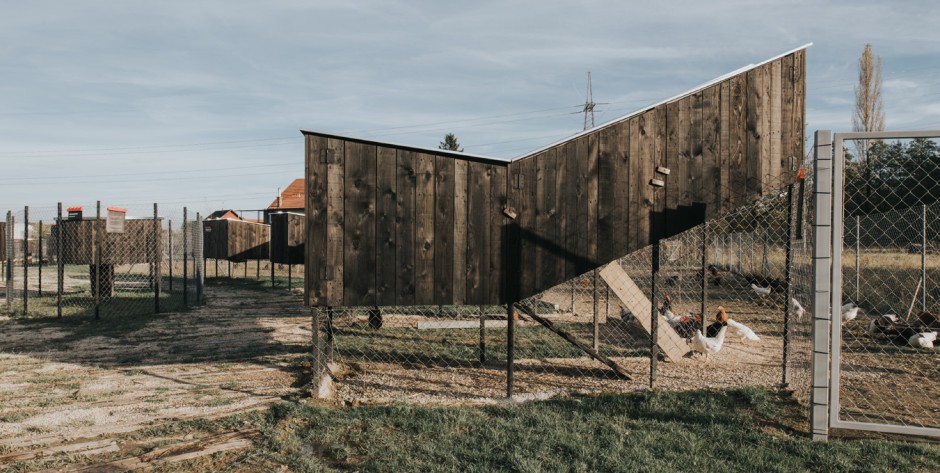
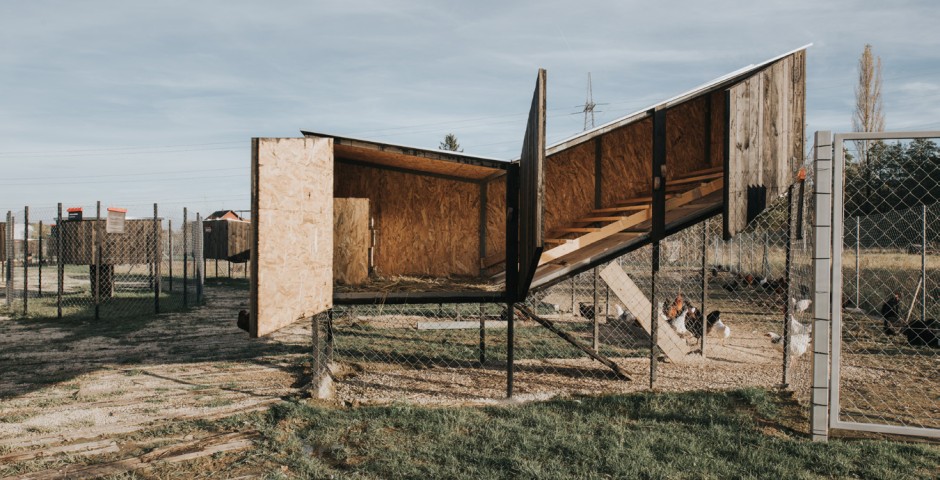
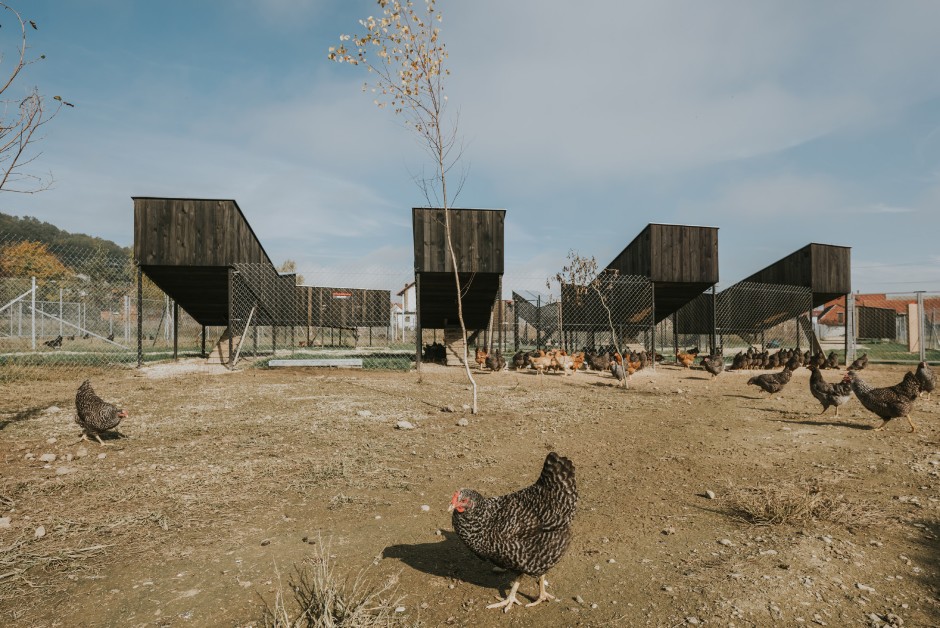
About SKROZ d.o.o.
SKROZ strives to integrate different disciplines and knowledge as they truly believe that diversity is an added value that provides new perspective and enrichment to creative solutions. They believe that architecture for the 21st century needs to be fast, agile and flexible, and people who create it must constantly pay attention to changes.
SKROZ was founded in 2008 as a result of a long-term collaboration of its founders – Margita Grubiša, Marin Jelčić, Daniela Škarica and Ivana Žalac. In 10 years’ time, many young and prospective professionals have contributed to award-winning SKROZ architecture.
About Graphisoft
Graphisoft® ignited the BIM revolution in 1984 with Archicad®, the industry first BIM software for architects. Graphisoft continues to lead the industry with innovative solutions such as its revolutionary BIMcloud®, the world’s first real-time BIM collaboration environment; and BIMx®, the world’s leading mobile app for lightweight access to BIM for non-professionals. Graphisoft is part of the Nemetschek Group.
